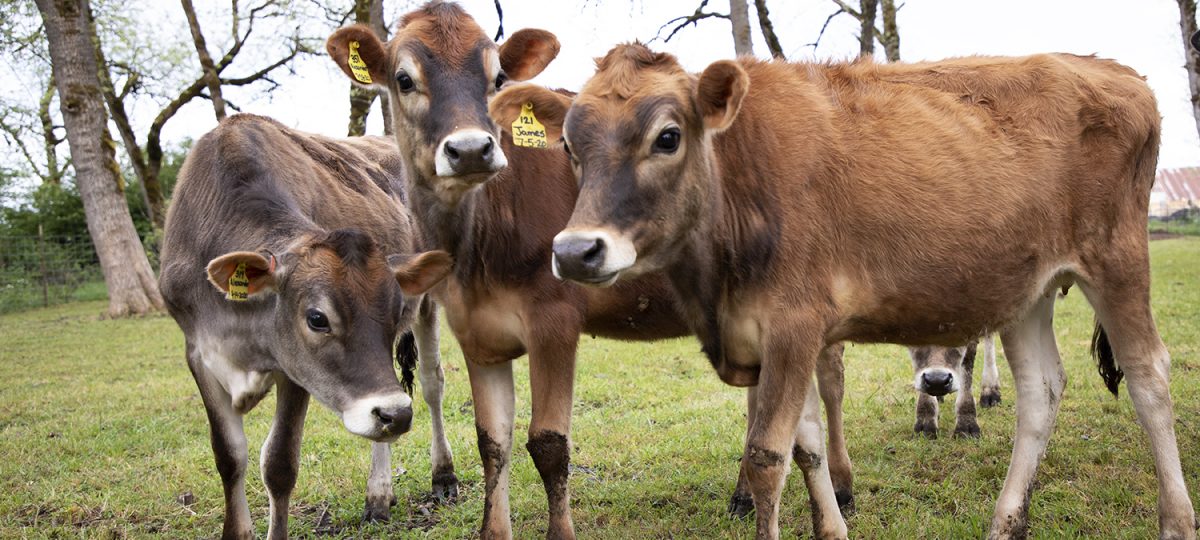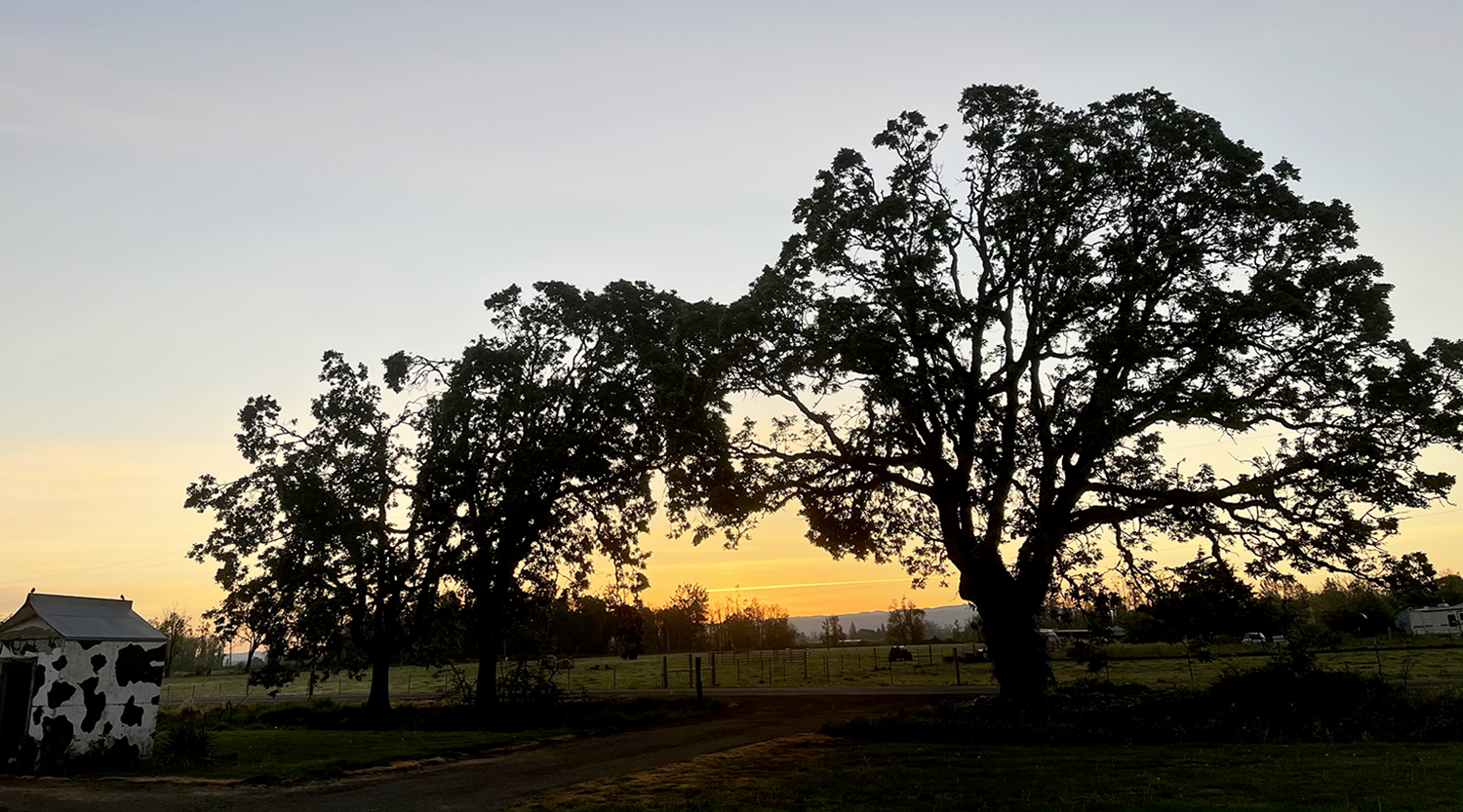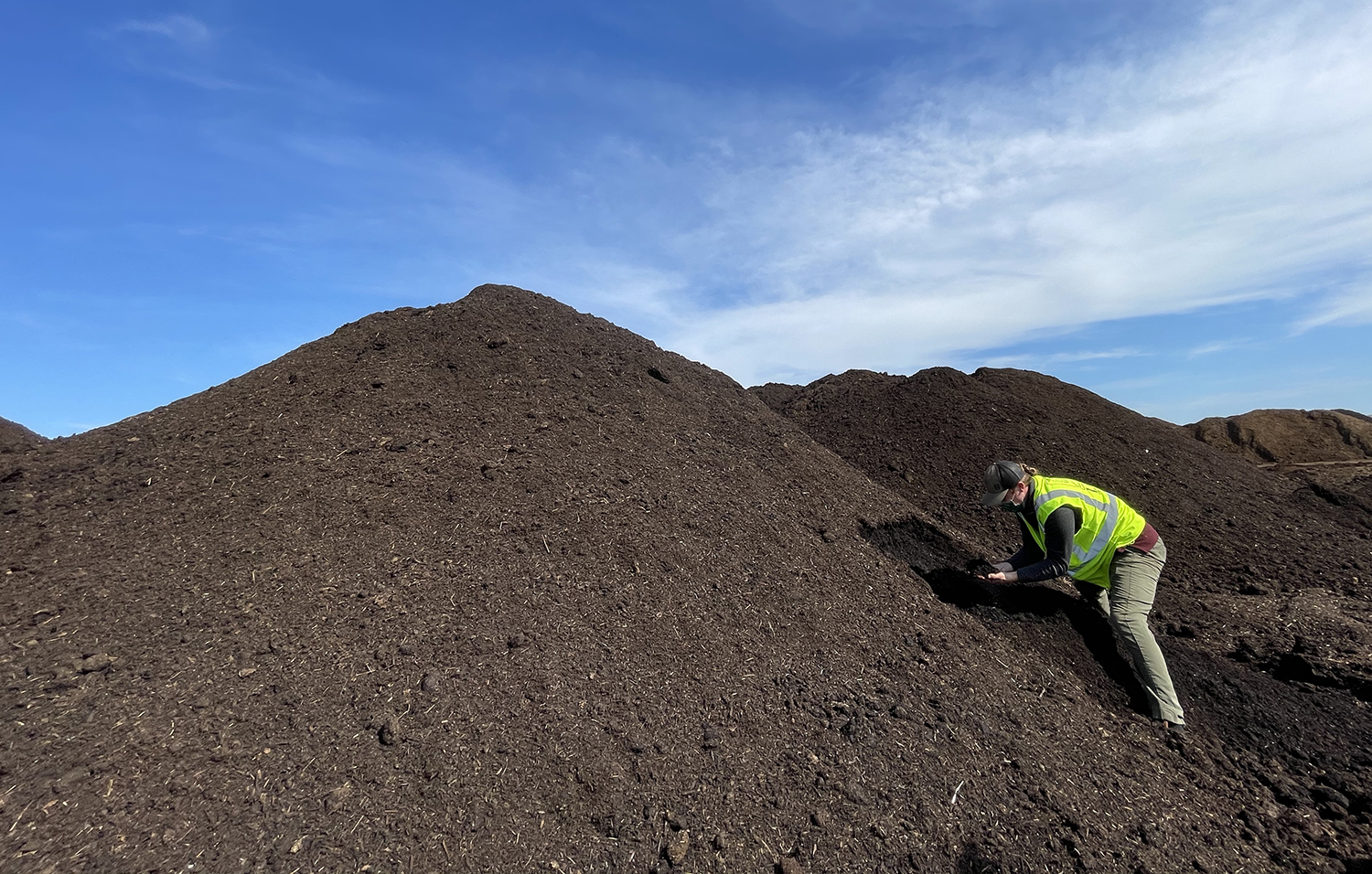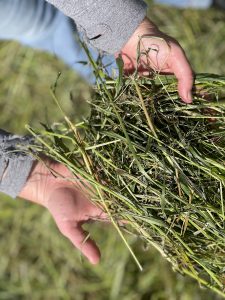The Daily Churn
Princeton scientist details agriculture’s role in decarbonizing the U.S.

Expanding existing farm practices combined with new carbon-sequestering technology could go a long way toward reversing climate change, according to Princeton University professor Stephen Pacala, Ph.D.
U.S. farmers could increase their negative emissions rate to 1 billion metric tons and eliminate up to 20% percent of the current 6.5 billion tons of annual greenhouse gas emissions by scaling up carbon-sequestering practices, Pacala told the Daily Churn.
Promising new land-based carbon sequestration methods, he adds, could further increase farmers’ future contribution toward decarbonization.
Pacala — who is a professor of ecology and evolutionary biology and co-director of the Princeton Carbon Mitigation Initiative — is particularly bullish about crushed rock materials—like olivine for example.
When spread on farm fields, he says, this green volcanic rock can sequester up to its own weight in carbon. He would like to see farmers compensated to spread olivine or other carbon-sequestering materials on their fields.
“Instead of a few 100 megatons a year in the U.S. (in soil-based sequestration), it could be a lot faster,” he says. “When you do the math, it’s just a giant number. And it would be a substantial payment to farmers.”

Achieving net-zero
Strategies like this combined with soil-based carbon sequestration solutions already employed on some U.S. farms and in forestry production, he adds, would go a “long way toward achieving net-zero.”
U.S. dairy farmers already employ several carbon-sequestering farm management practices, as reported by the Daily Churn. Pacala notes that U.S. soils currently sequester about 700 million metric tons annually.
Pacala recently chaired the first of two reports published by the National Academies of Sciences, Engineering and Medicine mapping out decarbonization policies for U.S. legislators. The Biden administration announced a plan on Earth Day to reduce U.S. emissions by up to 52 percent by 2030 as part of the ultimate goal to reach net-zero by 2050. Exactly how the U.S. will reach those goals are still being debated.
The U.S. is the number two climate change culprit worldwide after China, according to the U.S. Environmental Protection Agency (EPA), contributing 15% of the planet’s annual greenhouse gas emissions.
Greenhouse gases have already warmed the planet by 1 degree since pre-industrial times, according to the Intergovernmental Panel on Climate Change (IPCC). The group warns that global temperatures will climb even higher, triggering cataclysmic weather extremes, unless aggressive worldwide policies can be met to reduce and offset emissions.
A “cradle to grave” life cycle assessment of the U.S. dairy sector published in the International Dairy Journal found that milk production contributes 2% of U.S. annual greenhouse gases. 2019 EPA data shows that agriculture and forestry together contributed 10% of total U.S. emissions.
Offsetting agriculture’s contribution to climate change
But in the U.S. the farm and forestry sectors have the luxury of a large, non-urban land base that are well-situated to advance nature-based negative emissions technology that Pacala says would more than offset agriculture’s contribution to climate change.
Only three percent of U.S. land is considered urban, according to the University of Michigan’s Center for Sustainable Systems. The rest comprises crop and pasture lands, forests and open spaces—all suitable for various carbon sequestering practices, such as extending the lifetime of a forest before harvesting, no-till crop production, cover cropping or pasture-based livestock grazing.
He adds that nature-based sequestration plus mitigation efforts, such as methane-reducing feed additives for cattle and plugging methane leaks in oil and gas wells would be enough to offset all non-CO2 emissions created from methane, nitrous oxide and fluorinated gases.
CO2 emissions caused by burning fossil fuels (coal, oil and natural gas) contribute 80% of U.S. annual greenhouse gases, according to the Environmental Protection Agency.

Nature-based solutions
“There’s no doubt about it; nature-based solutions work,” says Pacala. “There’s a lot we can do with our existing forests. There is some we can do by reforesting new land. But there’s also a lot we can do with our agricultural soils on cropland. And, to an extent that isn’t as well understood, on our pasturelands as well.”
The first report Pacala chaired, published in February 2021, looked at decarbonizing the U.S. energy sector and creating a pathway to replace fossil fuels with renewable energy.
Slated for release in about a year, the second report will focus on agriculture, forestry and nature-based solutions in mitigating and negative emissions solutions and will include more details on new methods for soil-based sequestration.
There are many exciting technologies with the potential to significantly increase how much carbon agricultural lands could sequester and contribute to carbon credit trade programs for farmers, Pacala says.

Rock-weathering
Olivine is being trialed in preparation for spreading on coastal beaches by startup company Project Vesta. But many other rocks work as well, Pacala says, including basalt — which is widely deposited in the Pacific Northwest — or brucite, found in brucite tailing piles left-over at British Columbia mines.
The process, known as ‘rock weathering,’ involves crushing up carbon-sequestering basalt or other silicate material and spreading it on soils. These rocks slowly dissolve and react with CO2 to sequester carbon.
Pacala says the process for mining and grinding up these materials is inexpensive and farmers could spread them on their fields similar to an annual lime application.
Another possibility, Pacala says, is planting croplands into permanent grass crops, like miscanthus or even switchgrass native to the Great Plains. He says miscanthus, which has a 20-year-lifespan, can sequester up to 20 tons of carbon per hectare plus produce 50 tons of biomass annually.
All industry approach
That biomass can then be used to create biofuels, replacing carbon-belching fossil fuels. According to a 2018 Agricultural Marketing Resource Center report, biofuels from miscanthus is seen by many as “an ideal plant for producing fuel ethanol at a lower cost than corn.”
Still, while nature-based negative emissions technologies hold vast potential for reversing the effects of climate change, Pacala says none of it will matter if we can’t reach net zero in other greenhouse-gas emitting sectors, including transportation and heating.
“We’ve got to eliminate the CO2 emissions from industry, transportation, electricity and home heating,” he adds. “And we’ve got to mitigate the non-CO2 greenhouse gases, including agricultural methane.”
And then, he concludes, we need carbon sinks to offset what’s left.
“We need to do them all.”
:: All images via The Daily Churn
